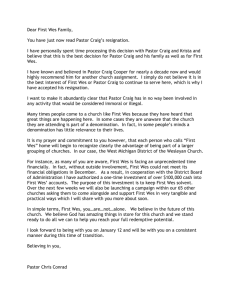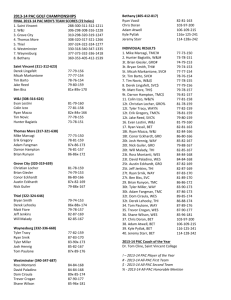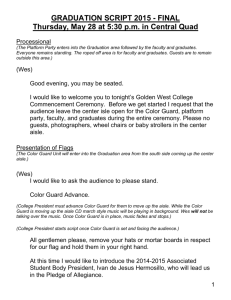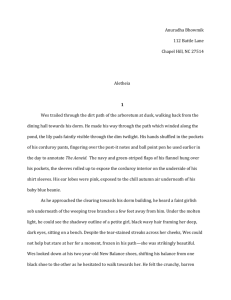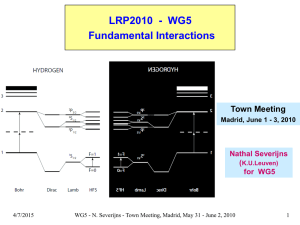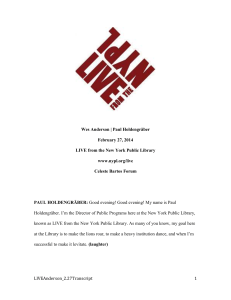How we did it.
advertisement
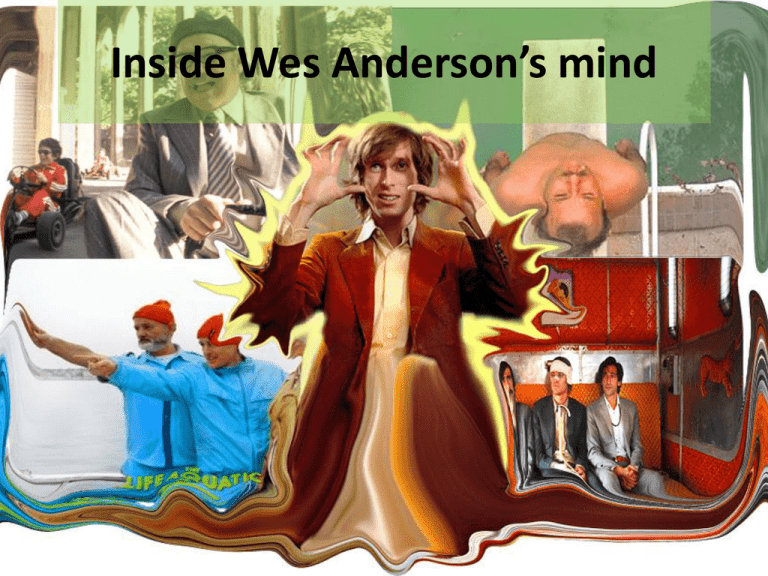
Inside Wes Anderson’s mind Bottle Rocket (Humble beginnings) • On this slide we will attempt to visually explain the financial constraints on Wes Anderson’s first film Bottle Rocket • We cut (lasso tool) Owen Wilson’s hand and placed under it a “Will work for food” sign to illustrate a fiscal vacancy. • The halo above Owen Wilson’s head is meant to denote his role in creating the movie. • We section off the area above and below he men on the couch and utilized an artistic filter, to make the men the focus. Rushmore • The acclaim garnered by his first feature allowed for a larger budget and broader audience for his sophomore effort: Rushmore. • In this image we created a collage of images from the film and morphed them (using the liquefy filter). The yellow outline is meant to give it the appearance of fire. • The broken chain link is meant to represent the artistic freedom Wes earned himself, after the critical success of his first feature. • We used the burn tool under his eyes to create the feeling of weariness, as this film was very mentally taxing to make. The Royal Tenenbaums (Wes hits his stride) • After receiving further critical acclaim and moderate box office success Wes was given the reigns on his third film The Royal Tenenbaums. • In this image we extended the ceiling upward (using the clone stamp) to give the impression that the bar had been raised after the success of Rushmore. • We attempt to illustrate the success of the Royal Tenenbaums by taking a copy of the DVD and making it literally shower money on to Wes. Life Aquatic with Steve Zissou • Wes continued his experimentation with color filters in his fourth film The Life Aquatic. •He showed his eccentricity by casting famous Bassa-nova musician Seu Jorge. •Once again this film sports an all star cast. •We illustrated this freedom of expression by taking a prominent picture from the film and incorporating Wes as he ascends out of the water, superhumanly •We alter the eyes on Wes and Bill Murray to show the eccentricity and a creative connection palpable between the director and characters. Wes also claims he sees a lot of himself in Bill Murray’s character. •We want to portray Wes Anderson as the “mastermind” •We took this original picture and used the clone stamp to extend it to double its original size, and then inserted a photo of Wes Anderson as he rises from the water The Darjeeling Limited (fall from critical grace) •Wes took his most recent film in an entirely new direction. Instead of focusing on the interactions of a variety of characters, Wes honed in on the story of three brothers and their tumultuous relationship. •This movie received mixed reviews as many critics found the characters too self absorbed. •In this image we will attempt to illustrate an element of despair or loss. •To exemplify the fall from grace endured by Wes Anderson, we found a Dutch and used it as a template to create a negative review. •We felt it was important to use a Dutch article because the title was in English and we wanted people to focus on the title and not try and read the article •In making this image, we took the article and clone stamped it and used a spot healing brush to work in the image and the heading and maintain the background of the article. We denaturized the image of Wes with the sponge tool to make the paper seem dreary and drab, much like the reviews

